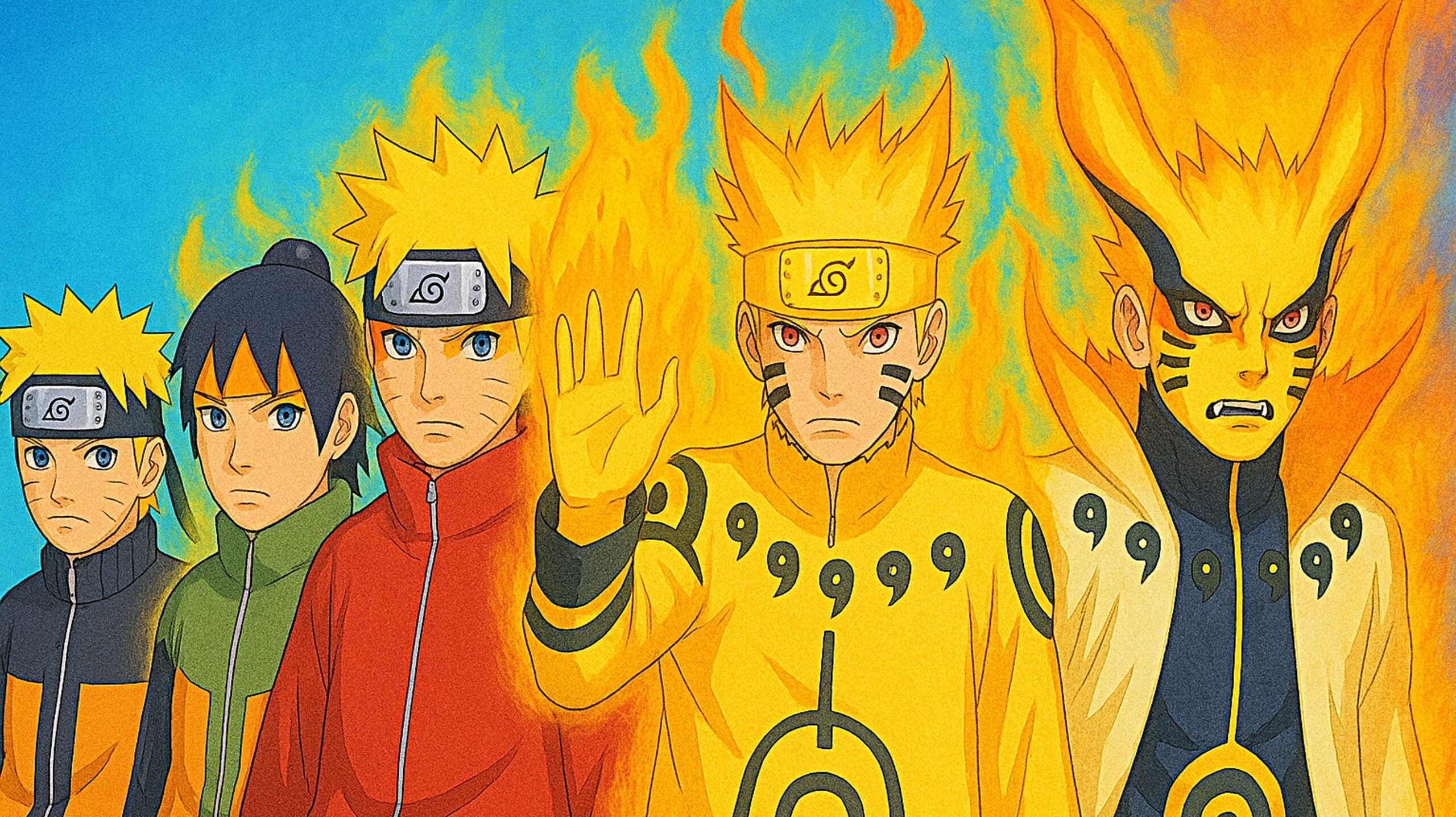From mischievous underdog to Hokage-level powerhouse, Naruto Uzumaki’s journey is defined by the many powerful forms he unlocks along the way. Each transformation—from his earliest use of chakra to his ultimate Baryon Mode—reflects not just an increase in strength, but a step forward in his growth as a ninja, a friend, and a protector of the ninja world.
In this guide, we’ll break down all Naruto forms in order, covering every major transformation he uses across Naruto, Shippuden, and Boruto. Whether you’re revisiting the series or diving deep into Naruto’s evolution, this is your complete resource for understanding his power progression.
Naruto Uzumaki’s journey from a mischievous outcast to the savior of the ninja world is one of the most iconic transformations in anime history—both metaphorically and literally. Throughout the Naruto and Boruto series, Naruto undergoes numerous physical and spiritual transformations, each reflecting his growth in strength, maturity, and emotional resilience.
Here’s a complete look at all of Naruto’s major forms—from his humble beginnings to god-tier power levels.
1. Base Form Naruto (Normal Form)
Naruto Uzumaki’s base form marks the humble beginnings of his journey as a ninja. Without access to Kurama’s chakra or Sage powers, he relies on his innate Uzumaki vitality, his determination, and clever battle tactics. His signature Shadow Clone Jutsu and Rasengan techniques play a major role in his early victories. Even without advanced transformations, Naruto shows flashes of brilliance and potential, often surprising seasoned opponents. This form lays the foundation for his growth into one of the strongest shinobi in the Naruto universe.
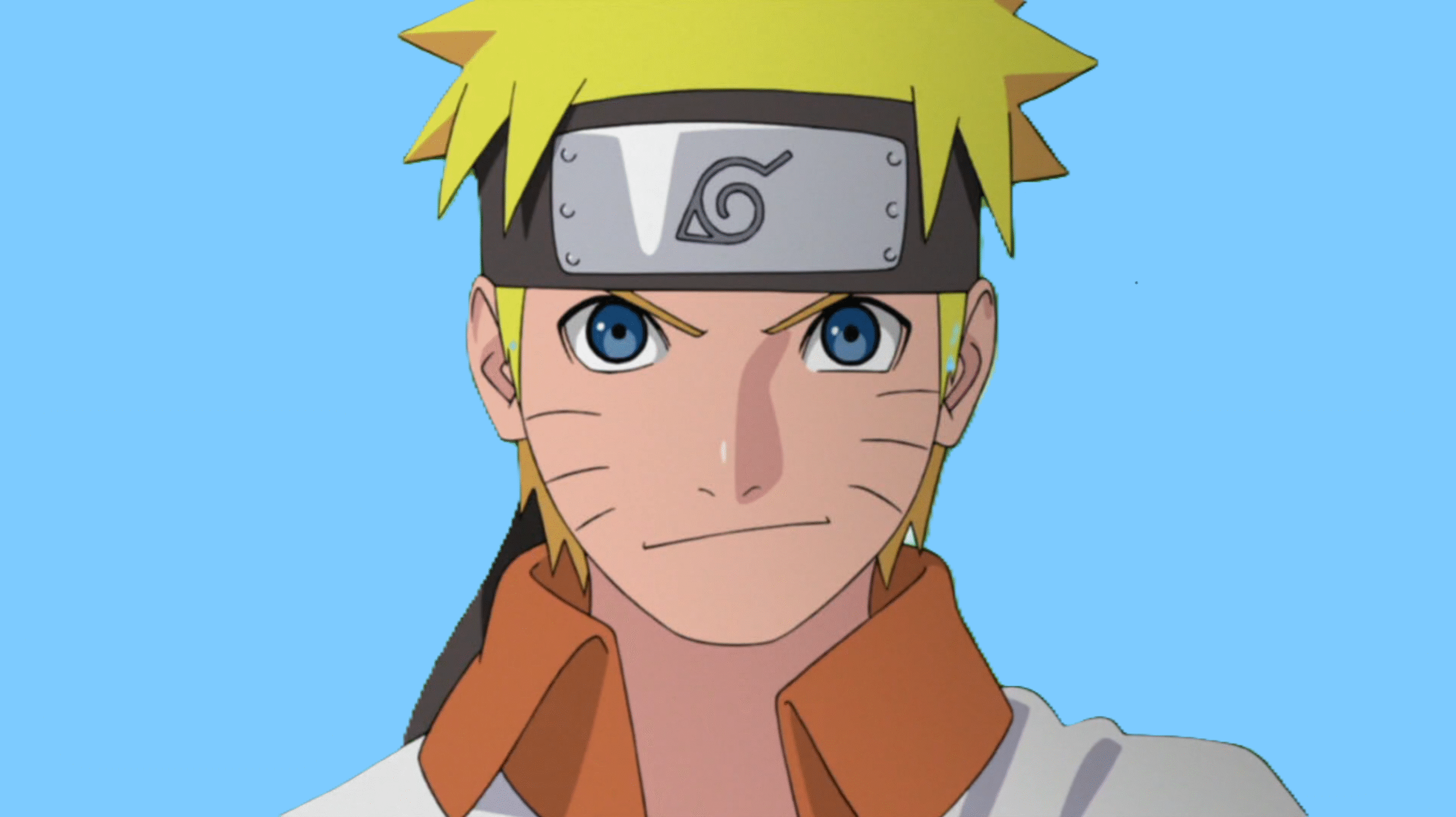
2. First Use of Kurama’s Chakra (Initial Form)
Naruto first accesses the Nine-Tails’ chakra during emotionally intense situations, such as when he’s severely injured or consumed by rage. This initial form is characterized by a red chakra cloak that boosts his strength, speed, and recovery. The transformation is not deliberate—Kurama’s power leaks out when Naruto is distressed. Although brief and unstable, it gives him a much-needed edge in dangerous fights. This stage is a turning point in Naruto’s power development and highlights his deep connection with the tailed beast sealed inside him.
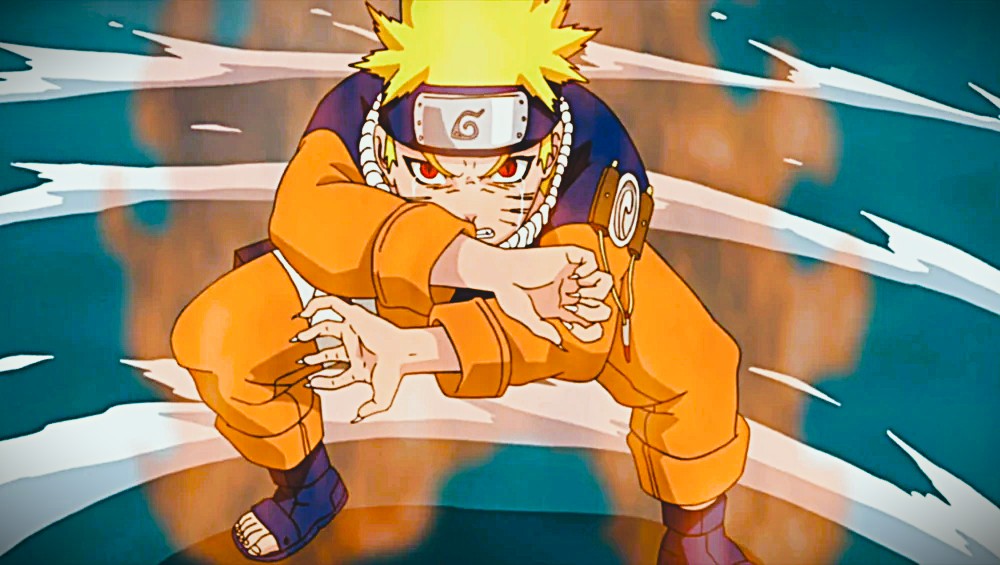
3. One-Tailed Cloak Naruto
As Naruto’s emotional state intensifies, especially under extreme anger or stress, he accesses a more advanced version of Kurama’s power. The red chakra shroud becomes denser, forming a tail behind him—hence the name “One-Tailed Cloak.” In this form, Naruto’s combat abilities increase dramatically. He can generate chakra arms for offense and defense, making him more versatile in battle. However, he starts to lose touch with his human nature, becoming more animalistic. This transformation is the first sign of the growing power—and danger—of his connection with the Nine-Tails.
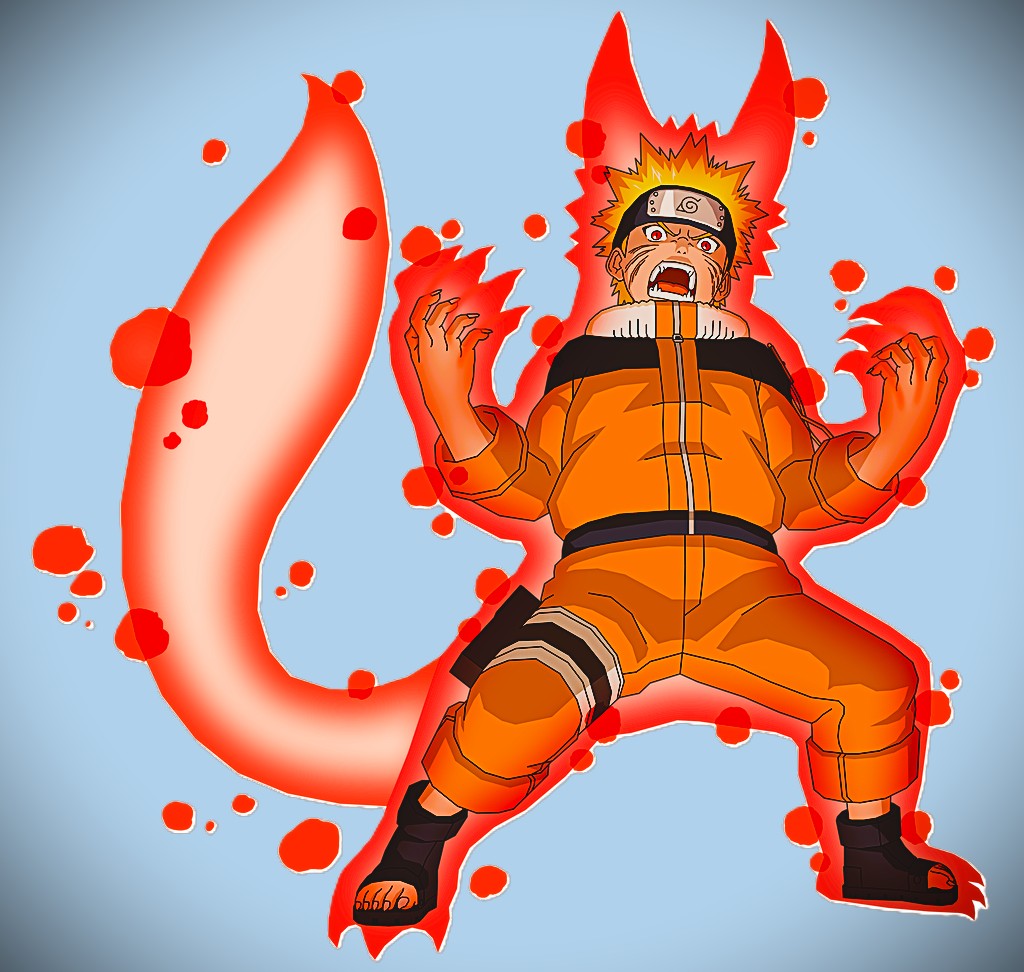
4. Four-Tailed Naruto Transformation
The Four-Tailed Form represents a major escalation in Naruto’s use of Kurama’s chakra. At this point, he loses conscious control, and his body is enveloped in a violent, bubbling chakra that mimics a miniature version of the Nine-Tailed Fox. His skin peels away under the intense energy, and he becomes a beast-like figure capable of enormous destruction. This form appears during high-stakes battles where Naruto’s rage is overwhelming. It’s one of the most dangerous stages of his transformation, often requiring external help to bring him back to his senses.
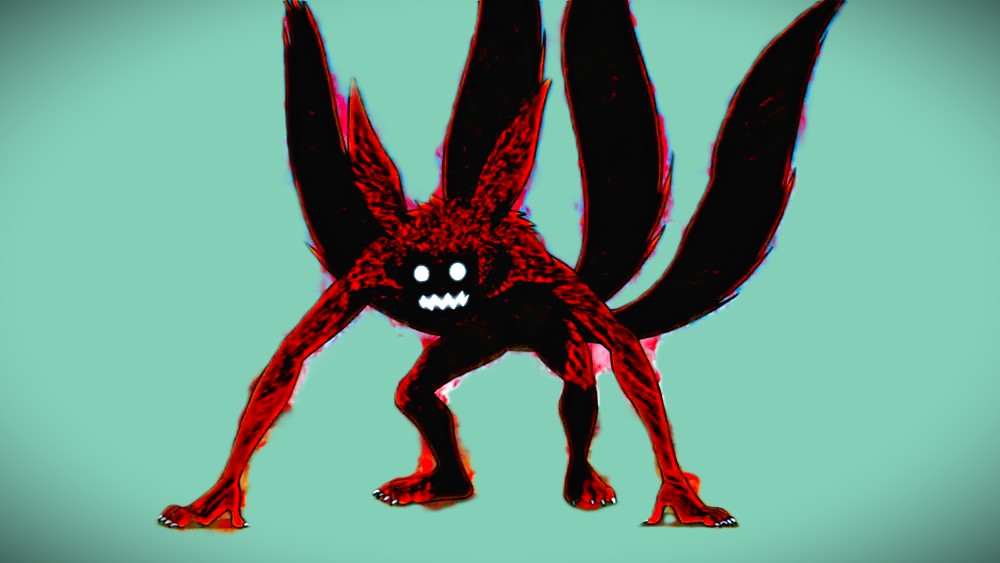
5. Six-Tailed Naruto
The Six-Tailed Form pushes Naruto even closer to a full-tailed beast transformation. His appearance becomes increasingly monstrous, and the corrosive chakra cloak begins to harm even himself. This version of Naruto is completely devoid of rational thought and becomes a force of raw destruction. His attacks become more unpredictable and wide-reaching. While it’s an intimidating show of power, this form is unstable and unsustainable. It emphasizes the cost of tapping into the Nine-Tails without mastering it—a lesson Naruto must learn before he can progress further.
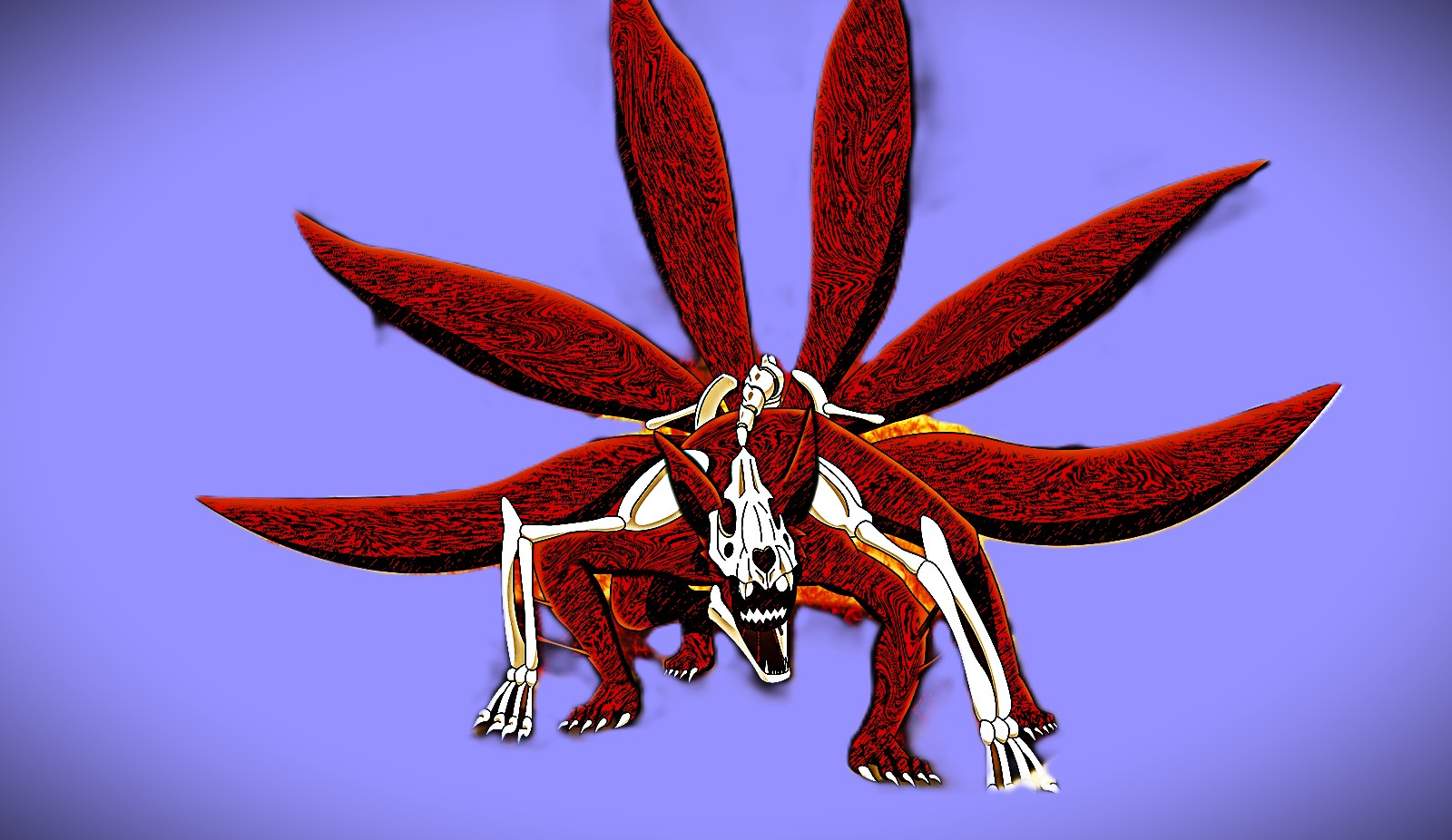
6. Eight-Tailed Naruto (Near Full Transformation)
During the battle against Pain, Naruto nearly undergoes a complete transformation into the Nine-Tails. With eight tails formed and the fox’s skeletal structure taking shape, this version of Naruto showcases the peak of uncontrolled Jinchūriki power. The destructive potential is enormous, and only a last-minute intervention from his father, Minato Namikaze, stops him from releasing the final tail. This moment is a major narrative climax, underscoring the urgent need for Naruto to find balance and control over Kurama’s power in the battles ahead.

7. Tailed Beast Form (Kurama Manifestation)
After earning Kurama’s trust, Naruto gains the ability to fully manifest the Nine-Tails in battle. This Tailed Beast Form allows him to create a massive golden chakra avatar resembling Kurama, capable of launching devastating Tailed Beast Bombs and engaging in large-scale combat. Unlike earlier transformations, Naruto remains fully conscious and in control. This transformation is a major turning point in the series, symbolizing his complete synchronization with Kurama and showcasing a massive leap in both power and maturity.
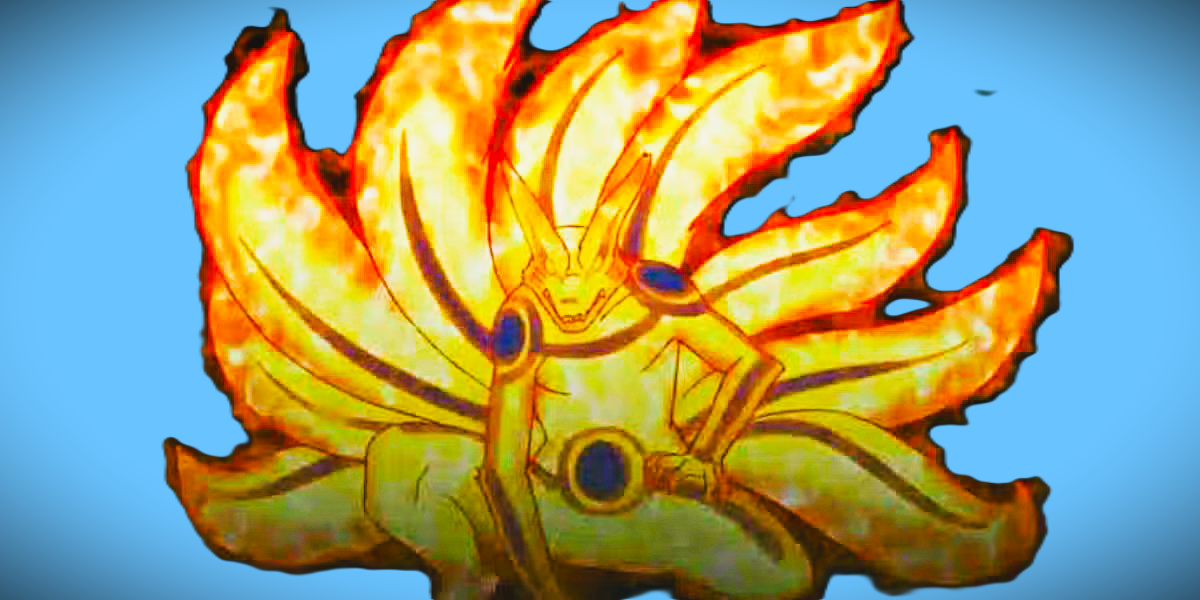
8. Sage Mode Naruto
Sage Mode is a transformation Naruto learns from the toads of Mount Myoboku. By drawing in natural energy and balancing it with his own chakra, he significantly boosts his physical strength, speed, sensory perception, and ninjutsu power. In this mode, Naruto can detect enemies from long distances and deliver enhanced Rasengan techniques like the Rasenshuriken. The orange pigmentation around his eyes is a signature visual cue. Unlike Kurama-based forms, Sage Mode is purely Naruto’s own power, showing his growth as an independent and resourceful shinobi.
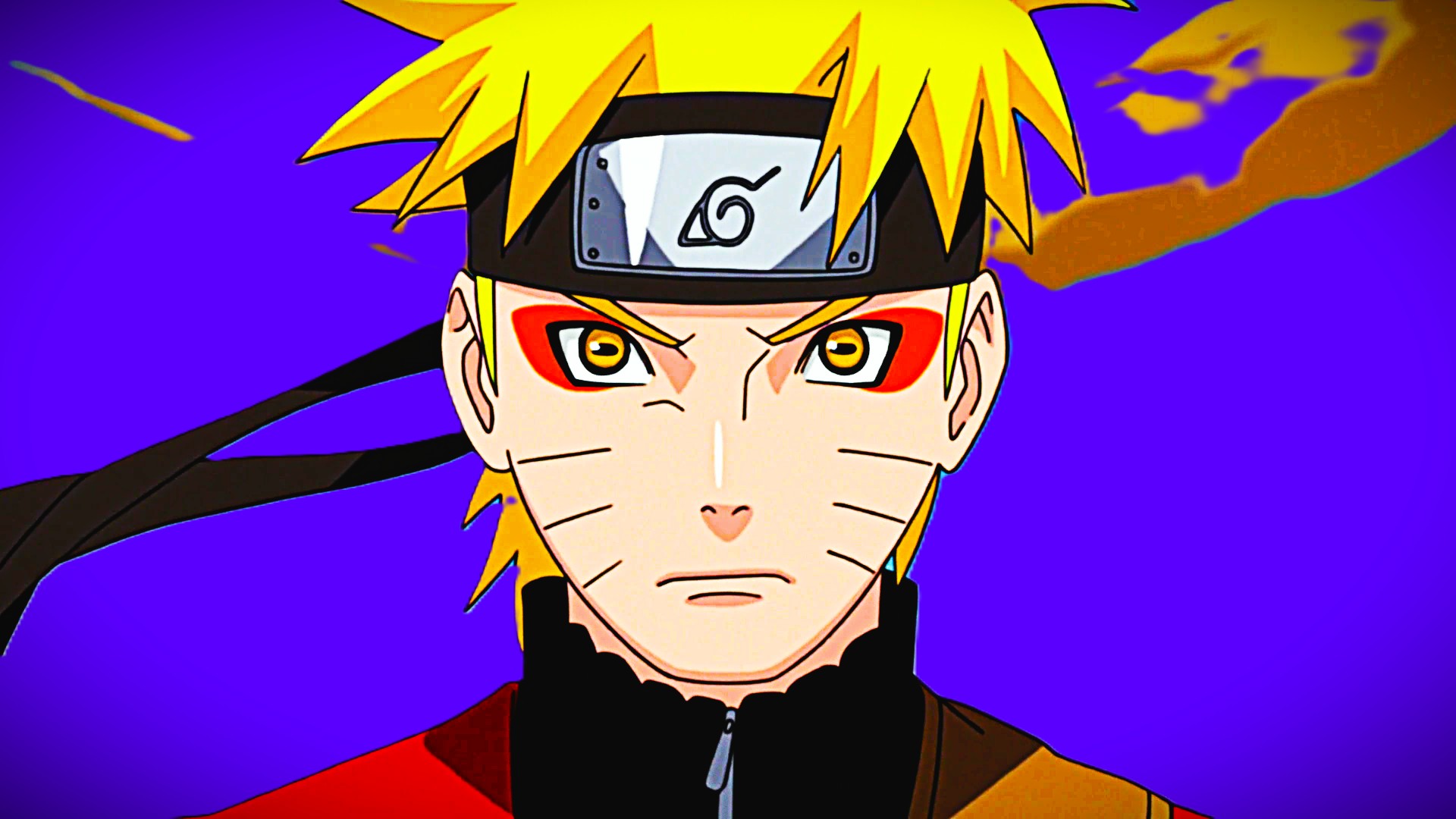
9. Kyuubi Chakra Mode (KCM1)
Kyuubi Chakra Mode, often referred to as KCM1, emerges after Naruto forcibly gains access to Kurama’s chakra during training with Killer Bee. This form wraps him in a sleek, golden aura that amplifies his abilities without the wild, corrosive effects of earlier cloaks. He gains enhanced speed, multiple chakra arms, and the ability to sense negative emotions. The transformation is efficient and controlled, representing Naruto’s first true step toward mastering the Nine-Tails’ power without losing himself to its influence.

10. Six Paths Kurama Mode
During the Fourth Great Ninja War, Naruto receives chakra from Hagoromo Ōtsutsuki, granting him the Six Paths Kurama Mode. This transformation combines the power of the Nine-Tails with the celestial abilities of the Sage of Six Paths. Naruto gains flight, Truth-Seeking Orbs, and heightened sensory perception. His physical strength and chakra output reach unprecedented levels. This mode marks Naruto’s evolution into a god-tier ninja, capable of battling powerful foes like Kaguya Ōtsutsuki and reviving allies with his new spiritual energy.
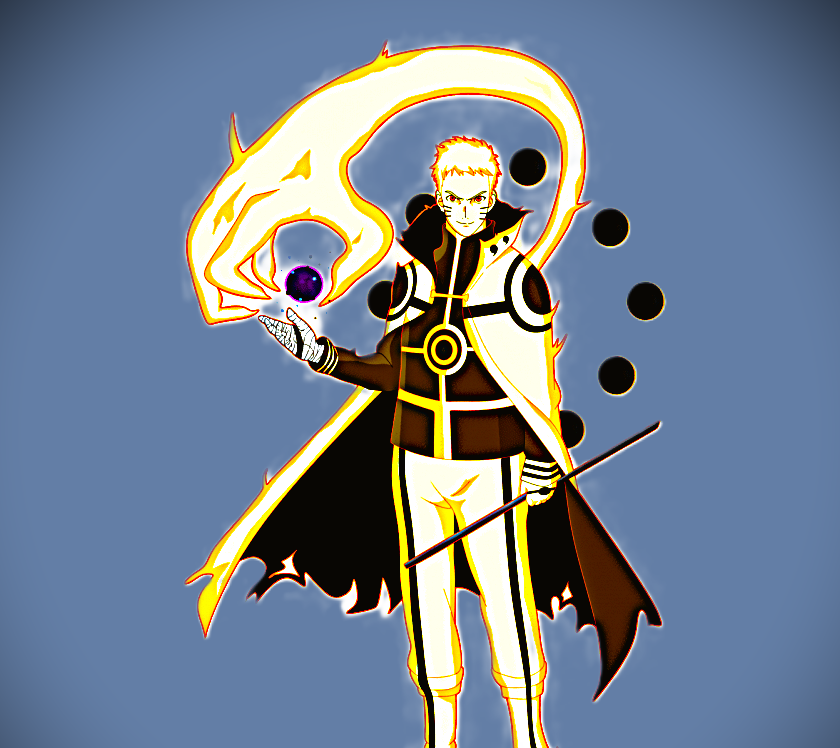
11. Six Paths Sage Mode
Six Paths Sage Mode is a refined, enhanced state that builds on both Sage Mode and Six Paths chakra. In this form, Naruto can sense everything in his environment, detect invisible threats, and even track chakra across dimensions. He can fly, create Truth-Seeking Orbs, and use advanced nature transformations with complete mastery. His reaction speed and healing abilities are vastly improved, making him virtually untouchable in battle. This form is Naruto’s most balanced and divine state, used during his most intense and high-level confrontations.
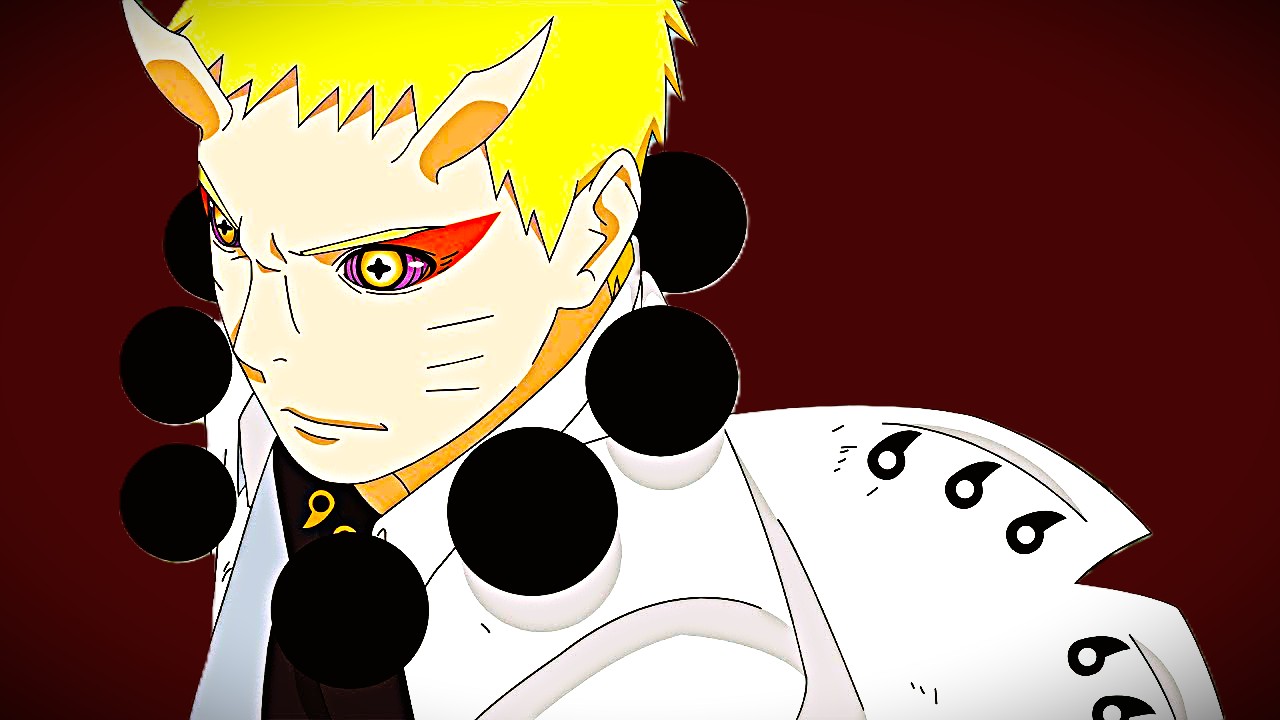
12. Asura Kurama Form
The Asura Kurama Form appears during Naruto’s final battle against Sasuke. It’s a chakra avatar that blends Kurama’s full power with the spirit of Asura Ōtsutsuki, Naruto’s ancestral predecessor. This warrior-like form is equipped with gigantic Rasengan-based weapons and can counter Sasuke’s Susanoo-enhanced attacks. It represents the climax of Naruto’s transformation journey—combining physical might, spiritual legacy, and perfect coordination with his tailed beast partner. The form showcases the depth of Naruto’s strength and his role in ending a centuries-old conflict.

13. Yang Kurama Naruto
After the battle with Madara, the original Nine-Tails is split into Yin and Yang halves. Naruto retains the Yang portion, which still grants him immense power. He continues to use Kurama Chakra Mode and Tailed Beast Bombs effectively, proving that even half of Kurama’s power is enough to maintain his dominance. This transformation solidifies Naruto’s role as protector of the ninja world and shows that strength isn’t just about raw energy, but also about experience, control, and strategy.
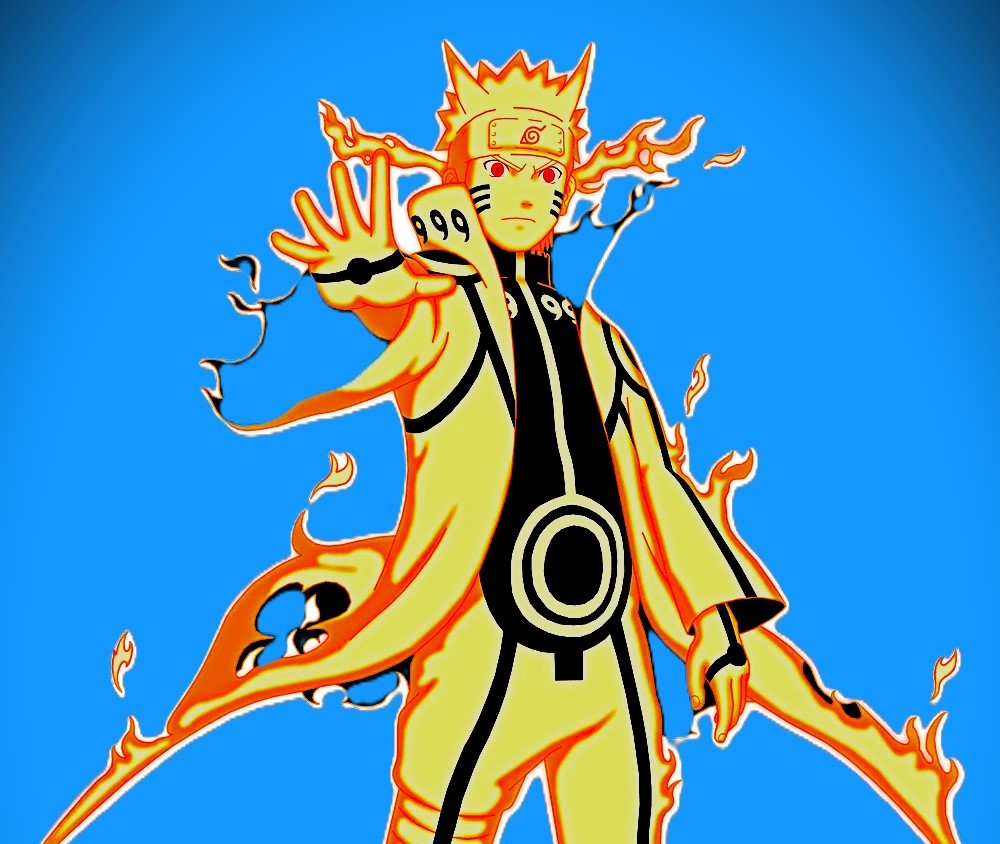
14. Yang Kurama Sage Mode
Combining Yang Kurama’s chakra with perfected Sage Mode results in an incredibly efficient and versatile transformation. This fusion allows Naruto to fight god-level enemies such as Momoshiki Ōtsutsuki during the events of Boruto. The form enhances Naruto’s physical power, reaction speed, and chakra precision, while also allowing for prolonged use without significant strain. It’s the most balanced form he regularly uses in the Boruto era, showcasing how far he has come in uniting natural energy with tailed beast chakra.

15. Baryon Mode
Baryon Mode is Naruto’s most powerful and dangerous form, introduced during the fight against Isshiki Ōtsutsuki in Boruto. By fusing his own chakra with Kurama’s in a process similar to nuclear fusion, Naruto gains an immense, short-term power boost. His speed and reflexes become unmatched, and even physical contact with enemies drains their life force. However, this form comes with a devastating cost—Kurama’s life. Baryon Mode is Naruto’s last resort, used only when the fate of the world is at stake.
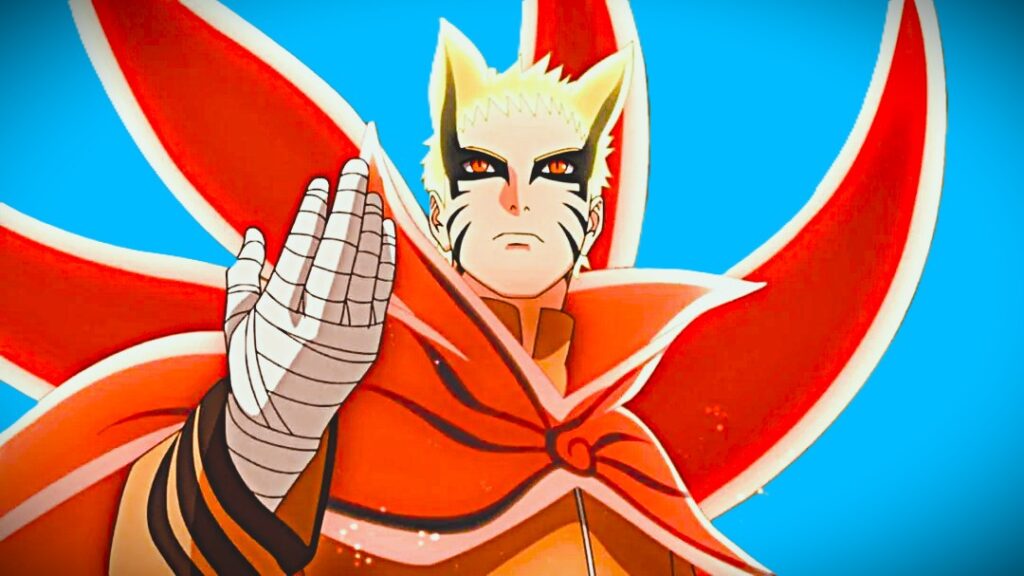
What Naruto’s Forms Reveal About His Evolution
Naruto’s transformations are more than just flashy power-ups—they tell the story of his inner battles, growing bonds, and relentless determination. From mastering Sage Mode to forging unity with Kurama and unlocking god-tier powers, each form represents a milestone in his legendary journey.
As Boruto continues, Naruto’s legacy lives on—not only in his son, but in the unforgettable journey that shaped him into the hero of the shinobi world. Whether you’re a long-time fan or just catching up, Naruto’s evolution remains one of anime’s most inspiring power progressions.

